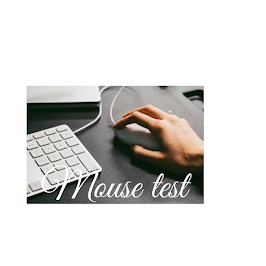How to test optical mouse in an easy way.
How an optical mouse
functions
An optical mouse works in something else entirely. It
focuses a brilliant light down onto your work area from a LED (light-emanating
diode) mounted on the lower part of the mouse. The light bobs straight back up
off the work area into a photocell (photoelectric cell), additionally mounted
under the mouse, relatively close to the LED. The photocell has a focal point
before it that amplifies the mirrored light, so the mouse can react all the
more definitively to your hand developments. As you push the mouse around your
work area, the example of mirrored light changes, and the chip inside the mouse
utilizes this to sort out how you're moving your hand.
Some optical mice have two LEDs. The first focuses light
down onto the work area. The light from that is gotten by the photocell. The
subsequent LED illuminates a red plastic strip along the rear of the mouse so
you can see it's working. Most optical mice additionally have a wheel at the
front so you can scroll pages on-screen a lot quicker. You can tap the wheel as
well, so it capacities like the third (focus) button on a traditional ball
mouse.
Inside an optical PC
mouse
An optical mouse is considerably more greetings tech than a
ball mouse. Where a ball mouse has many moving parts, an optical mouse is on
the whole electronic (it has basically no moving parts).
Here is within a run of the mill optical mouse and a couple
of the primary parts. The most fascinating pieces are in the middle (where the
LED light gleams down onto your work area) and at the front (where button
presses are identified by switches):
Parts inside a
minimal expense optical mouse
A LED at the back produces red light and sparkles it on a
level plane, from the rear of the mouse toward the front (from the left to the
right of this photograph).
A plastic light aide channels the light from the LED at a
point, down onto the work area.
A light-locator chip estimates light reflected back up from
the work area, changing over the simple developments of your hand into advanced
signs that can be shipped off your PC.
The parchment wheel at the front of the mouse is mounted on
a switch component that identifies both how much it's pivoted and regardless of
whether you've squeezed (it capacities like the focal button of an ordinary
mouse). Revolutions of the parchment wheel can be distinguished in a wide range
of ways. A few mice use potentiometers (comprehensively, factor resistors),
like the volume control on a radio yet ready to pivot on various occasions.
Others utilize different sorts of revolving switches or optical (rotating)
encoders to change simple wheel developments over to computerized signals.
A micro switch distinguishes when you press the right mouse
button. There's an indistinguishable switch on the opposite side to distinguish
the left mouse button.
The USB link association conveys computerized data from the
mouse to your PC.
The light aide inside a PC mouse conveys light from a LED
down to your work area.
How does a remote
mouse work?
Imagine a scenario where you can't utilize a mouse.
A normal PC touchpad.
A mouse requires very great skill and individuals with versatility
impedances (or excruciating conditions like joint pain) may battle to utilize
one. What are the other options? There are ergonomically formed mice with
worked in hand rests , joysticks you can move with different pieces of your
body, head controls, touch balls , bigger renditions of the touchpads you get
on workstations, and a couple of different potential outcomes. Despite the fact
that it's not self-evident, many projects have inherent console alternate
routes that can supplant a specific measure of mouse action (CTRL + C to
duplicate is one the greater part of us know, however each program has its own
little set that merit researching and learning if you find a console simpler to
use than a mouse). If you use voice correspondence programming, you'll most
likely observe it has a handsfree, verbal likeness mouse control worked in. On
a portion of the Dragon Dictate programs, for instance, you say "mouse
network" to cause a framework of nine square shapes to show up on your
screen, then, at that point, just talk the quantity of the section that
compares to the digit of the screen you need. The network then, at that point,
focuses in on that section with a more modest nine-fragment lattice and you
rehash the cycle until you hit the exact piece of the screen you're keen on. In
this way, no mouse... don't worry about it!


Thanks for sharing this blog, You can also speed test your mouse and spacebar by using cpstest website.
ReplyDelete